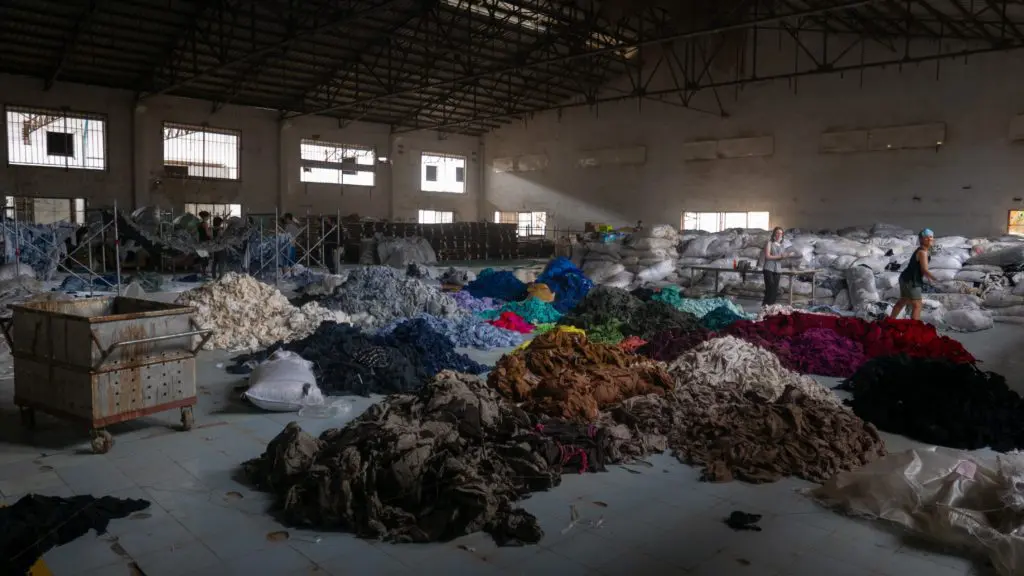
“Sustainable fashion” is a diverse term with multiple connotations; its meaning changes drastically according to each individual or organization. In simple terms, it denotes the social and environmental impact of fashion throughout its supply chain. Sustainable fashion or slow fashion is a common alternative to fast fashion, which is the practice of making clothing from cheap materials and under exploitative working conditions. This clothing is then quickly disposed of in landfills across the world, which in turn impacts local communities. This incredibly fast rate of production, consumption, and disposal also harms garment workers’ well-being, burdens the earth with excessive waste, and convinces consumers to buy trendy clothes to look good and feel good. Given the recent trend of thrifting, sustainable fashion has emerged as a top priority for conscious consumers. However, it forces us to consider what all comes under the umbrella of sustainable fashion, how you can participate in it, and whether it’s realistic to expect brands and designers in the 21st century to support this shift in fashion.
Tracing the History of Fashion
Fashion changed drastically as a result of the industrial revolution. Before the emergence of garment factories in the United States, it was normal to take care of clothing, mend, and elongate its longevity. The introduction of fashion brands competing to make money changed that. Society morphed as more people entered the industrial workforce and created shifts in the quality of products, and how they were consumed. The industry turned towards fast fashion and shifted away from what we currently understand as sustainable and environmentally-conscious fashion practices. No longer was society encouraged to hold on to clothing. Instead, the race for profit maximization from large fashion brands pushed the myth that consumers must constantly buy themselves into society, and uphold a mainstream sense of normalcy and identity by donning the latest trends.
The Birth of Fast Fashion
The term “fast fashion” was coined in the 1990s by the New York Times when Zara landed in New York. Many collections were released to the public in an effort to make money from the industrial process advancing across the nation. As garment workers labored away with unregulated working conditions, retail stores started blossoming. This cheap new way of fashion was sadly not aligned with supporting worker rights or labor regulations. Today, this has led to consumers blindly buying goods without knowing the story or origin behind their clothing. In 2021, the conditions of garment workers in the United States improved slightly by the introduction of the Garment Worker Protection Act. But the hidden true cost of fashion has caused a plethora of environmental and social issues across the globe, which includes the climate crisis and poverty inequality.
Sustainable fashion emerged as a way to address the issues found in the fashion industry by informed citizens. Progress around sustainable fashion awareness has become known as fashion activism and is part of a larger movement that involves stepping away from fast fashion and looking towards a radical, re-envisioned future. Sustainable fashion practices today mean re-wearing clothing already in your closet, upcycling old pieces, mending holes and tears, and buying from sustainable fashion brands. This has allowed people to take care of what they own, to think critically about the industries they are supporting, and become part of a larger, like-minded community. The downside of sustainable fashion is that it is no longer a norm in society. This has made the eco-friendly movement inaccessible to those that don’t have the time, money, or energy to deviate from fast fashion. Meanwhile, those that do have the privilege to engage in sustainable fashion have excess time, money, or energy, which are often white, upper-class women. This has caused sustainable fashion to become exclusionary, especially when sustainable fashion brands angle their business models and marketing towards this specific target audience, and as thought leaders remain to be white, privileged women.
The Future of Sustainable Fashion
The future of sustainable fashion is realistic only when it is in solidarity with everyone. This means it must become a social norm to increase the presence and practice of sustainable fashion. This increased accessibility will bring together people of all backgrounds, races, and statuses. However, sustainable fashion is already the norm for low-income communities who can’t afford to buy new clothing every time a new trend comes out. This showcases how sustainable fashion is being practiced differently across varying income brackets, and it highlights how buying from sustainable fashion brands is not realistic for low-income citizens, even though their lifestyle is a reflection of the sustainable fashion movement.
The future of sustainable fashion has the potential to become unrealistic for everyday consumers given the development of digital fashion. Fashion brands have started to push toward digital fashion, but it is not a holistic approach to sustainable fashion. Physical clothing will always be required, no matter the socioeconomic background. Not everyone will have the resources, time, and money to consume both physical and digital fashion. Skill-based activities such as mending and upcycling are realistic solutions to fast fashion given they would extend the life of clothing already in existence. However, these tangible and intangible solutions are small points in a bigger picture on how to move forward with insight into the damaging effects of fashion.
The Practice of Sustainable Fashion
Sustainable fashion used to be the normal way to consume and take care of clothing before the industrial revolution. Fast fashion has simply become our new normal and a commonplace practice on how to think about, consume, and dispose of clothing. Unfortunately, the fashion industry has been shaped by the interest of fashion executives more so than the needs of people and communities. To start moving toward the future of fashion, and how it was practiced in the past, sustainable fashion must become accessible to all. If this movement is not available to the masses then this will only cause even more negative issues in society. This calls for all of us to be part of this change to accurately represent all the different needs, desires, and adjustments needed for fashion to have a positive environmental and social impact.
Take Sustainable Fashion Action
The change will not just come from just buying from sustainable fashion brands. Holistic progress in the fashion industry that is realistic and attainable to all must involve the efforts of normal, everyday consumers who deeply understand their clothing needs and their local community. We must look into the past, but also towards the future while reflecting inward on how to take care of our clothing and striving to understand external, and social issues. Consider joining Fashion Takes Action’s efforts to make sustainable fashion a reality by following us on social media, or even becoming an FTA Youth Ambassador. We need everyone in order to make a real difference!
Written by Elle Magaña Mireles
